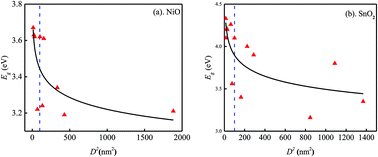Development of a nano-QSPR model to predict band gaps of spherical metal oxide nanoparticles†
Abstract
Antibacterial activities and cytotoxicity of metal oxide nanoparticles are determined by their special band structures, which also influence their potential ecological risks. Traditional experimental determination of the band gap is time-consuming, while the accuracy of theoretical computation depends on the selected algorithm, for which higher precision algorithms, being more expensive, can give a more accurate band gap. Therefore, in this study, a quantitative structure–property relationship (QSPR) model, highlighting the influence of crystalline type and material size, was developed to predict the band gap of metal oxide nanoparticles rapidly and accurately. The structural descriptors for metal oxide nanoparticles were generated via quantum chemistry computations, among which heat of formation and beta angle of the unit cell were the most important parameters influencing band gaps. The developed model shows great robustness and predictive ability (R2 = 0.848, RMSE = 0.378 eV, RMSECV = 0.478 eV, QEXT2 = 0.814, RMSEP = 0.408 eV). The current study can assist in screening the ecological risks of existing metal oxide nanoparticles and may act as a reference for newly designed materials.



 Please wait while we load your content...
Please wait while we load your content...